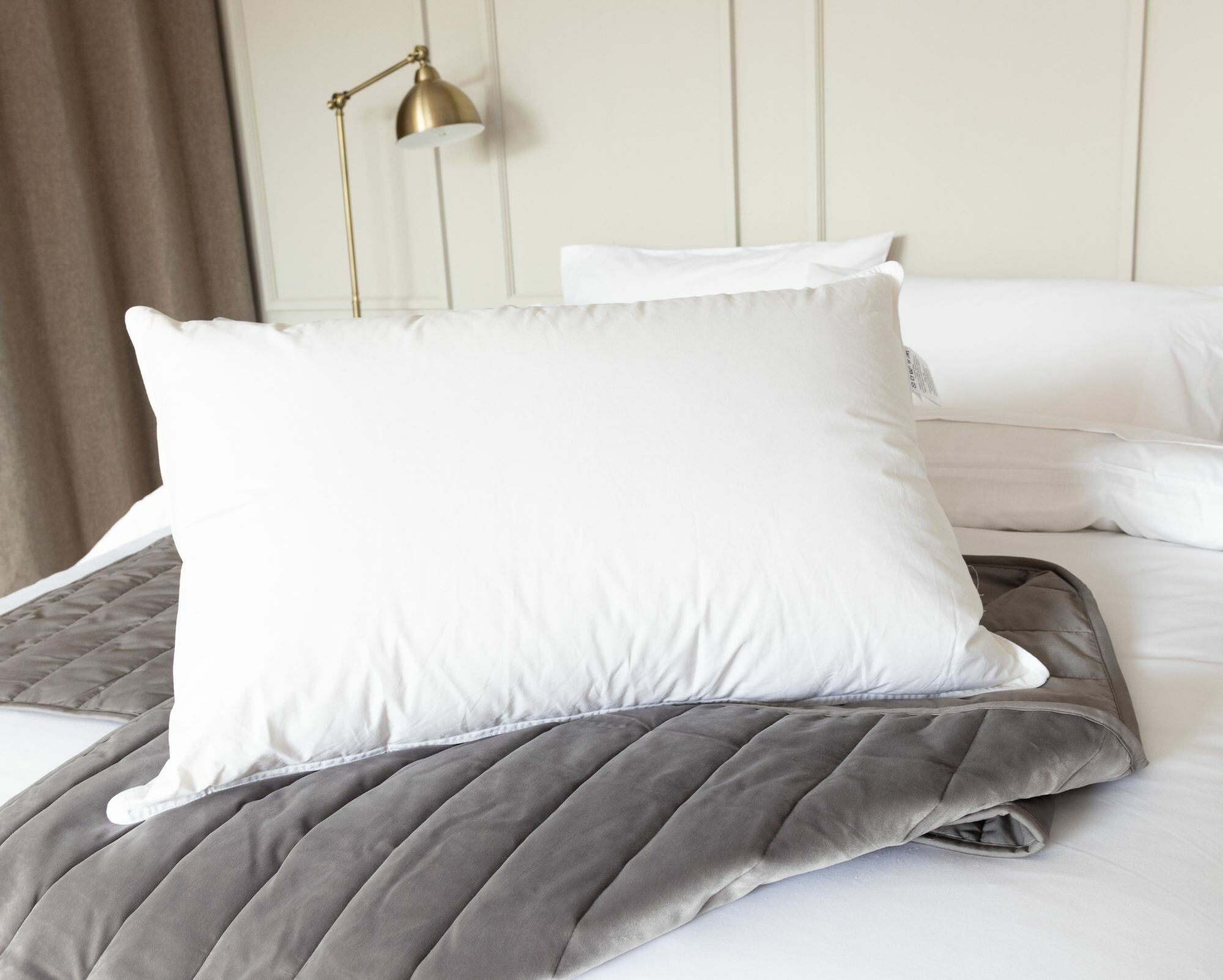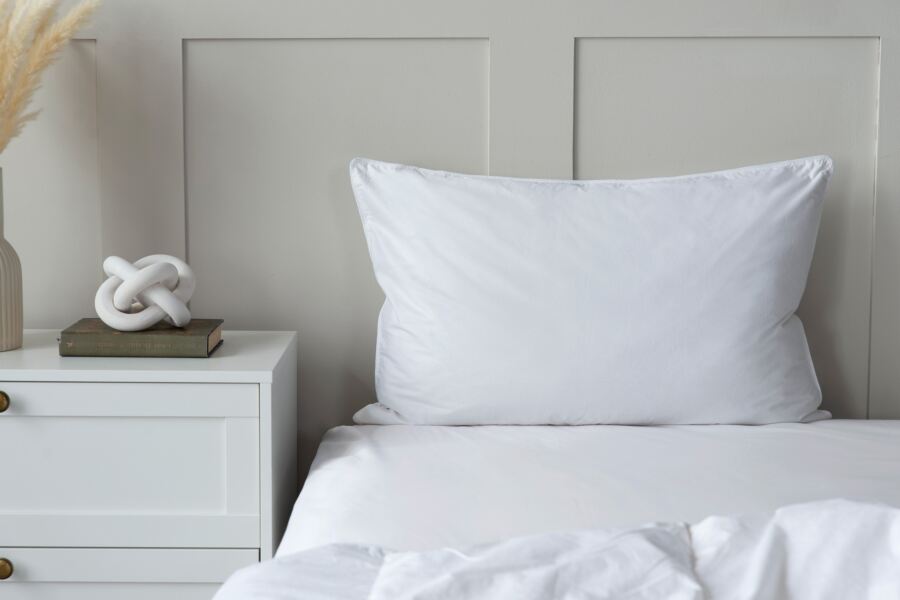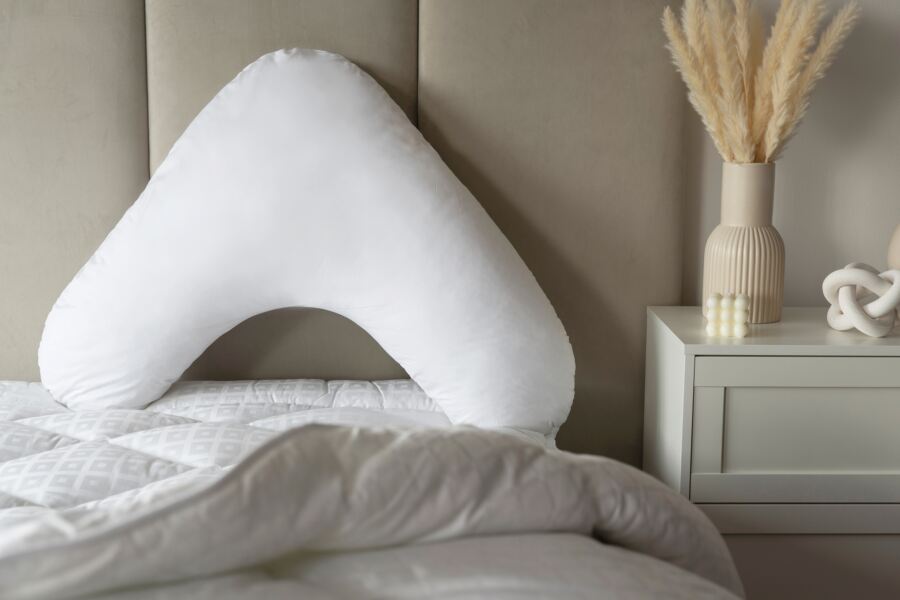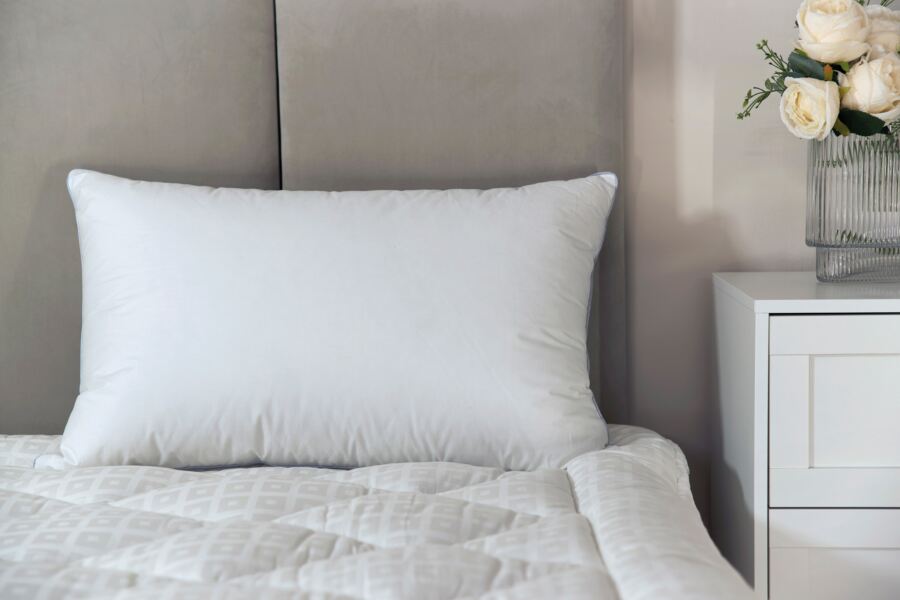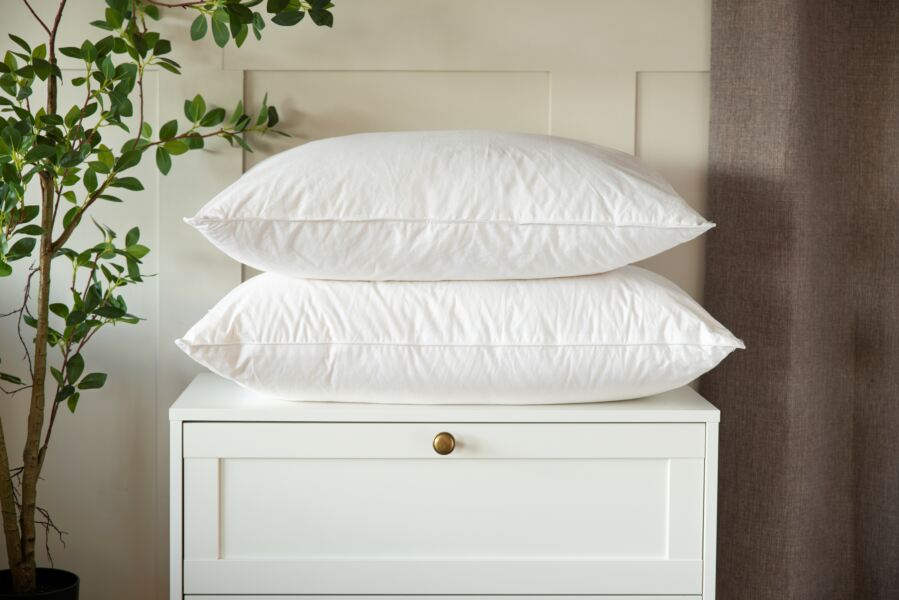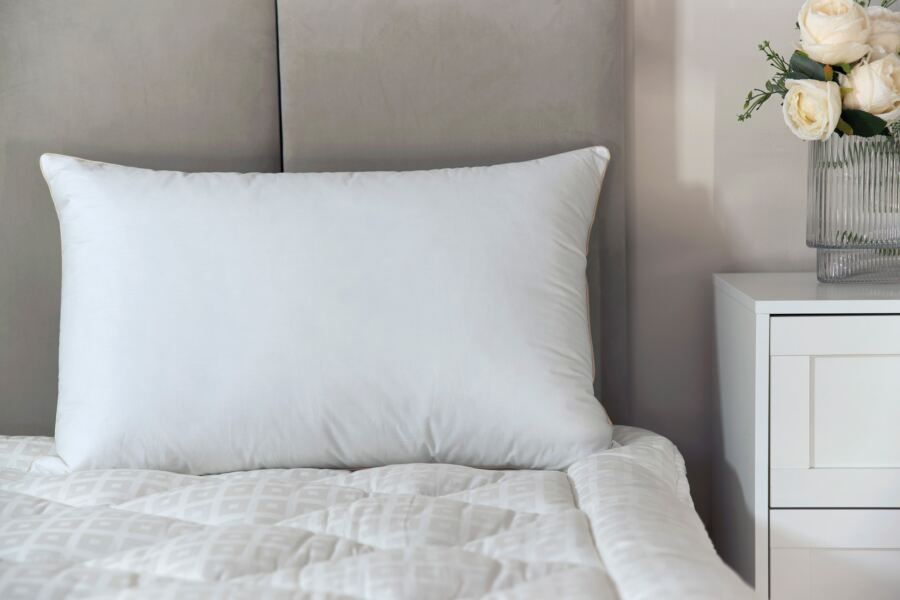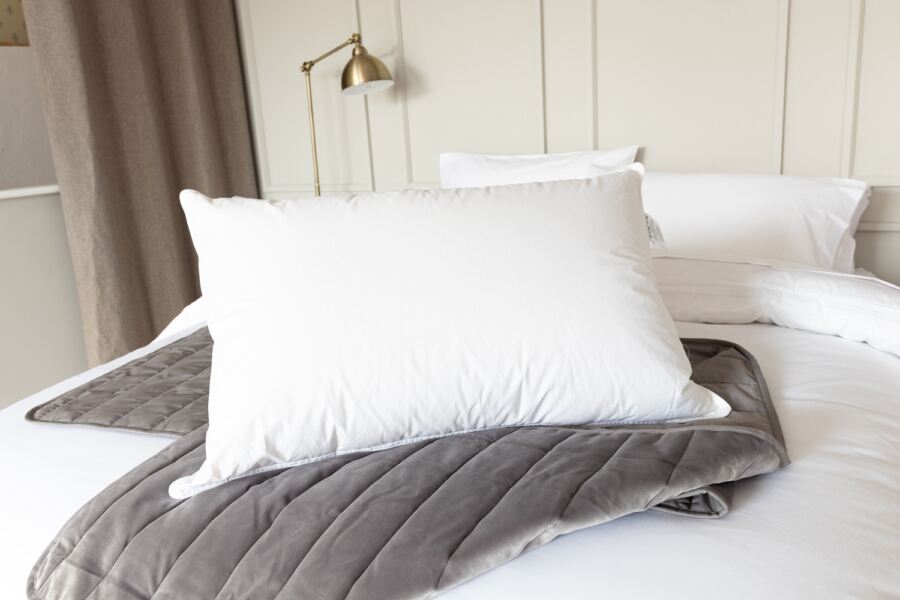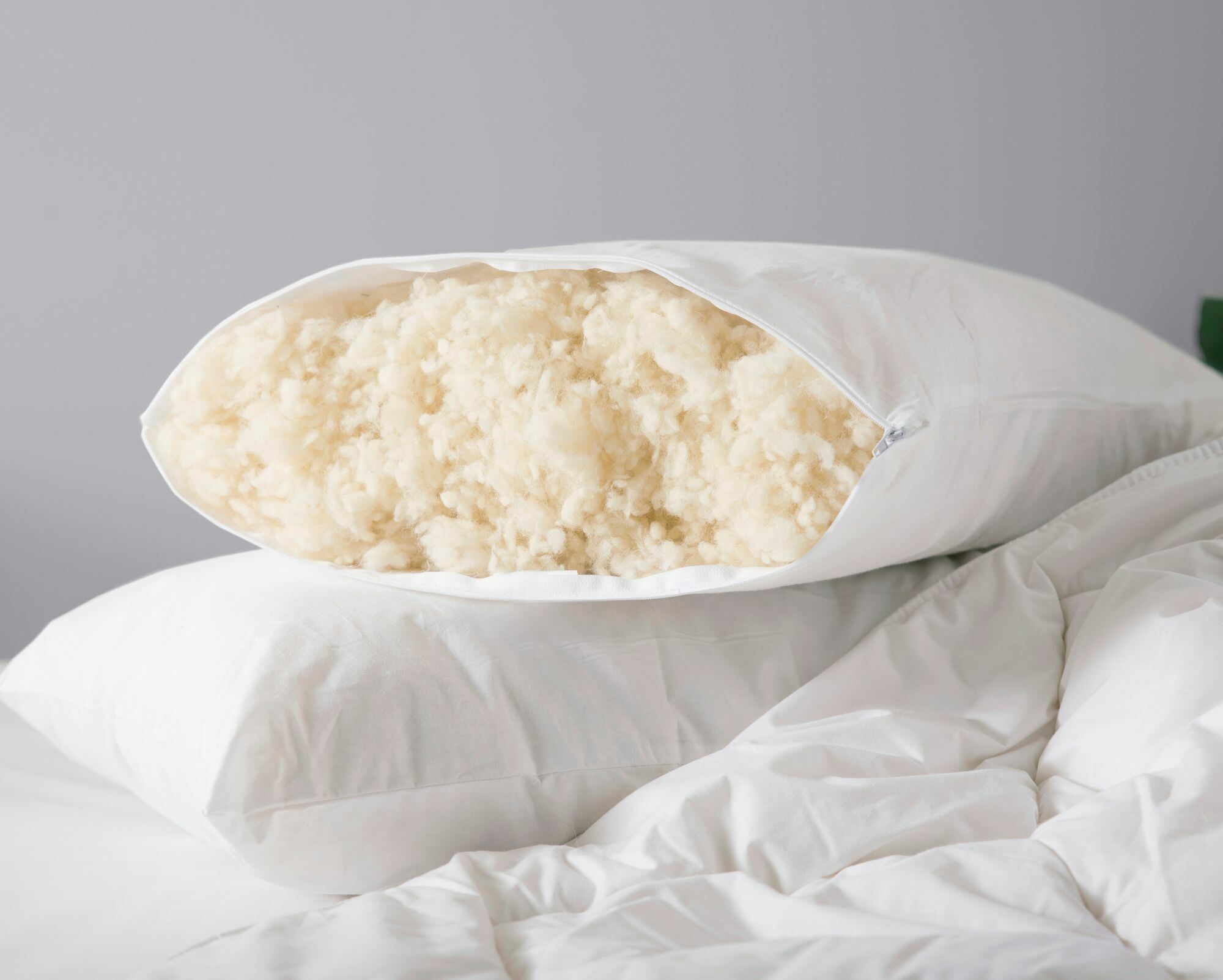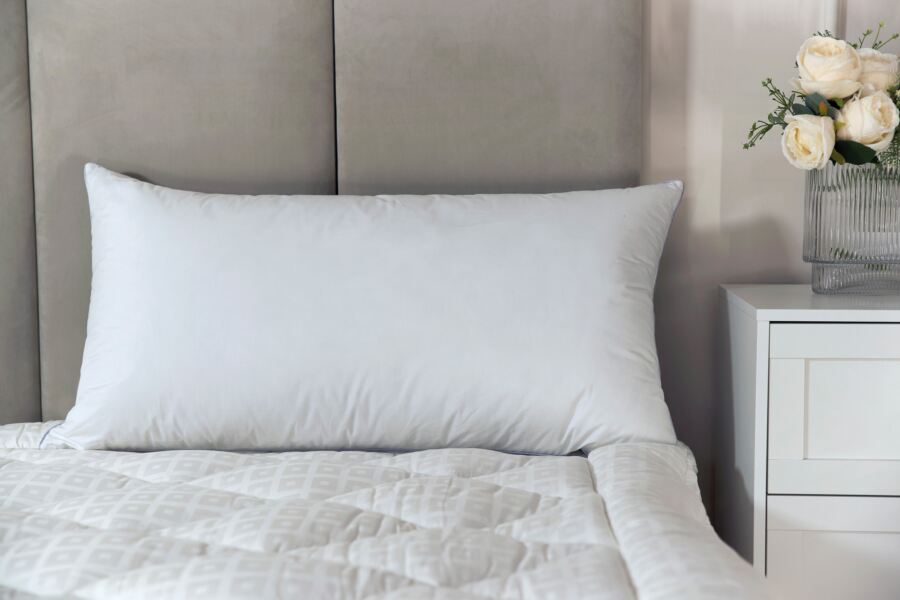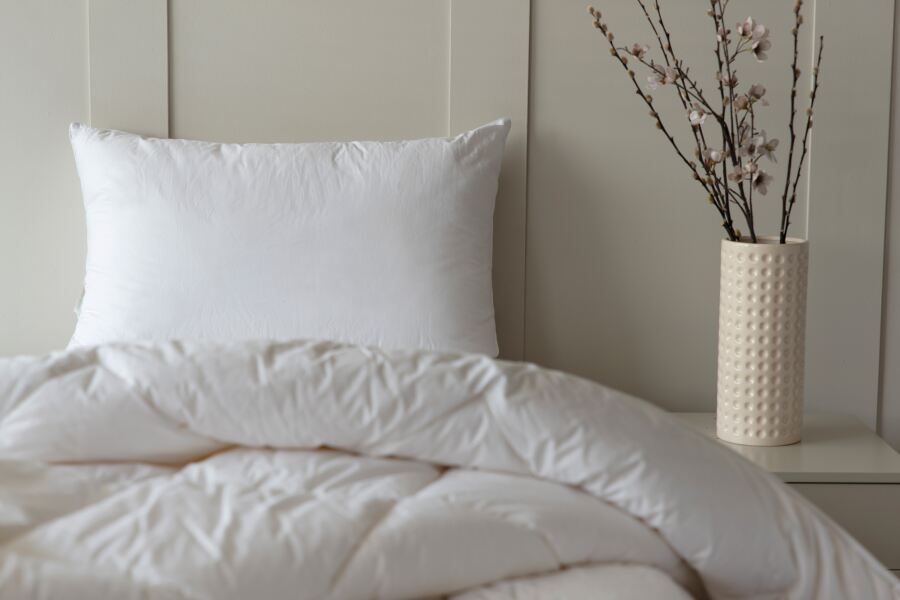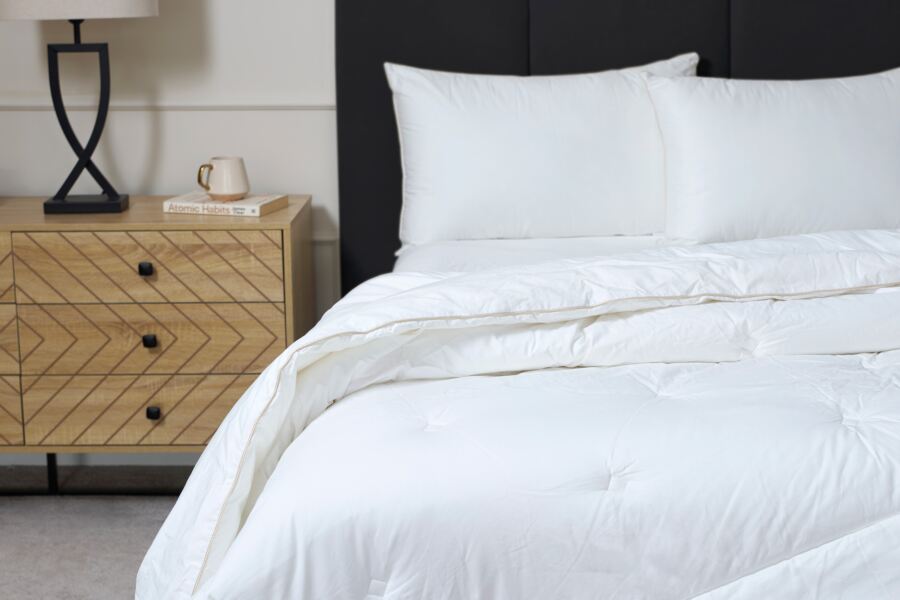Table of Contents
- The Importance of Buying the Right Pillow
- The Best Pillows for Different Sleeping Positions
- What Type of Pillow Filling Should I Choose?
- Other Considerations
- What Size Pillow Should I Use?
- FAQs
The Importance of Buying the Right Pillow
Improved mood, increased focus, and better cognitive function are just a few of the benefits that come with quality sleep. But the real question is: how do you ensure a good night's rest? Although many factors affect your sleep, your pillow is one of the most important.
The right pillow ensures your head, neck, and spine maintain proper alignment throughout the night. In turn, it prevents strain on your muscles and joints, significantly reducing the likelihood of waking up with stiffness, aches, or even chronic neck and back pain.
The Best Pillows for Different Sleeping Positions
When sleep experts recommend pillows, they usually do so based on your sleeping position. Whether you fall asleep on your side or are more of a stomach sleeper, we'll help you find your perfect match.
Side sleepers
When you lie on your side, there's a natural gap created between your head and the mattress. Your pillow's job is to fill this space, ensuring your head and neck are level with your spine, rather than tilting up or down.
To achieve this, we generally recommend side sleepers opt for a firmer pillow with a higher loft (thickness). A very soft pillow or one that's too flat will allow your head to sink too low, putting strain on your neck.
Good options include memory foam and latex pillows, especially those that offer adjustable filling so you can customise your height (a loft of 12-18 cm is generally ideal).
Back sleepers
Back sleepers typically have the most options available to them, as all they need is to maintain the natural curve of their neck while keeping their spine aligned. The goal is a pillow that offers gentle, supportive cradling, ensuring your head isn't pushed too far forward or allowed to fall too far back.
Medium-loft pillows with medium firmness tend to work best, providing a balance between cushioning and stability.
Go for a memory foam pillow that reduces pressure points and doesn't push the head too far forward. Cervical or orthopaedic V-Shape pillows, designed with a built-in curve to support the neck, are also great for promoting alignment.
Front sleepers
Sleeping on your front, while a common preference, can be one of the more challenging positions for maintaining healthy spinal alignment compared to side and back sleepers. So, you want to look for a pillow that minimises the strain placed on your neck and spine, especially when your head is twisted to the side.
A very thin or even flat pillow is ideal here to prevent your head from being pushed too far upwards. Additionally, the softer and more compressible the pillow, the better.
When it comes to filling, down or down alternatives are usually ideal. Alternatively, you could try sleeping without a pillow altogether.
Combination sleepers
Many people tend to toss and turn while sleeping, shifting positions throughout the night. If this sounds like you, opt for a versatile pillow that can comfortably accommodate different positions without compromising spinal alignment.
A medium loft is often the sweet spot, providing enough support when you're on your side, while not being so high that it strains your neck when you roll onto your back.
Those with adjustable shredded memory foam or latex fillings are also ideal, so you can customise the loft and firmness to your preferences.
What Type of Pillow Filling Should I Choose?
Another one of the most important considerations is pillow filling. While memory foam is very popular, natural and plant fibre pillows also have proven benefits.
If you're looking for a comfortable night's sleep, here are some of the fillings you may want to learn more about:
Natural pillow fillings
Natural fillings like feather, down, silk, wool, bamboo, and latex are breathable, eco-friendly options that mould gently to the shape of your head and neck.
-
Bamboo and other plant-fibre fillings have seen a massive rise in popularity thanks to their breathability and anti-bacterial properties. Their minimal environmental impact is an added bonus.
-
Feather, down and silk pillows are soft and luxurious, often used by 5-star hotels thanks to their cloud-like feel.
-
Latex and wool pillows provide firmer support with excellent temperature regulation and durability.
Natural pillows are ideal for sleepers who prioritise sustainability and natural materials. Just keep in mind that these pillows tend to be slightly pricier than those made from synthetic materials.
Synthetic pillow fillings
Synthetic pillow fillings, such as microfibre and polyester, are incredibly popular, and for good reason. They're lightweight and naturally hypoallergenic, making them an excellent choice for anyone with allergies looking for a cleaner sleep environment.
They also offer great value, allowing premium comfort without the premium price tag. What's more, many modern synthetic options can mimic the soft, lofty feel of a natural down pillow while being easier to clean and maintain, making them a practical option for busy households.
Memory foam
Memory foam pillows are specifically designed to contour to the shape of your head and neck. Available in solid or shredded foam varieties, the material's ability to distribute weight evenly means it effectively relieves pressure points, which can be particularly beneficial for those prone to neck aches or discomfort.
Plus, some designs feature cooling gels or ventilation channels to combat heat retention, making them ideal for 'hot sleepers'.
Other Considerations
In addition to pillow filling and sleeping position, there are a few other factors to consider when finding the perfect pillow for a great night's sleep:
Breathability
Whether you live in a particularly warm climate or you're naturally a 'hot sleeper', choosing a breathable pillow can greatly improve your sleep quality.
Natural fibres, such as cotton, tend to be the most breathable, while gel-infused memory foam pillows are specifically designed to dissipate heat and actively promote a cooler sleep surface.
Allergies
There's nothing worse than waking up with a blocked nose and a sinus headache that lingers throughout the day. If this sounds familiar, your pillow might be the culprit.
These symptoms are often triggered by common household allergens, most notably dust mites, which can thrive in bedding over time. Some may also have an allergy to certain fillings, particularly natural options like down pillows.
Your best bet would be to choose a hypoallergenic pillow made from bamboo, organic cotton, or memory foam. Additionally, those with severe allergies may want to consider investing in a specialised anti-allergy pillow or pillow protector.
Snoring
Anti-snore pillows aim to minimise your snoring by keeping your airways open. They usually come in a wedge shape and are made from memory foam. This design gently elevates and supports your head and neck in a way that encourages a clear airway. It also helps prevent the tongue from slipping backwards and obstructing the airway.
Neck Pain
If you experience neck and shoulder pain, you may have trouble getting a good night's sleep. However, a medium-firm pillow can provide enough support without straining your neck too much. You may also want to consider cervical pillows, which are specifically designed to relieve neck pain. If neither of these options is effective, consult your primary care physician.
What Size Pillow Should I Use?
Pillow size can affect both your comfort and the overall look of your bed. Standard pillows are usually around 48x74 cm, and suit most sleepers and bed sizes. However, king or queen-sized pillows provide extra space for movement and work well on larger beds.
If you toss and turn at night or simply enjoy more cushioning, a larger pillow may be ideal. Alternatively, smaller options, like travel pillows, are great for adding extra support to specific areas. Just keep in mind that your pillow should match your sleeping style as well as your bed dimensions.
FAQs
How often should I buy a new pillow?
Sleep experts recommend buying new pillows every two years or so. Over time, your pillows can lose their firmness and develop a buildup of bacteria and moisture, resulting in hygiene and comfort issues.
What role do pillowcases and pillow protectors play?
Pillowcases and pillow protectors play an essential role in keeping your pillow clean and comfortable. These products can also help extend your pillow's lifespan, saving you money over time.
Pillow protectors, specifically, act as a barrier against sweat, moisture, dead skin cells, dust, and other allergens, thus improving hygiene. They also help keep the shape of your pillow by adding a bit more structural support.
What pillows do most 5-star hotels use?
Most luxury hotels have feather pillows, which are known for their softness and luxurious feel. Down pillows also popular in hotels. However, if you prefer a more supportive pillow, you can ocassionally request a different option ahead of time.
How should I wash my pillows?
The first thing you should do is look at the care label to learn more about the specific washing guidelines. Some pillows can be machine washed, so long as you use a gentle heat and a mild detergent. However, down pillows may require cool water and a delicate cycle. Wash two pillows together to help balance the washing machine.

